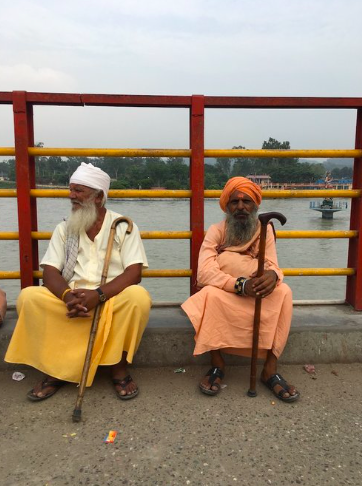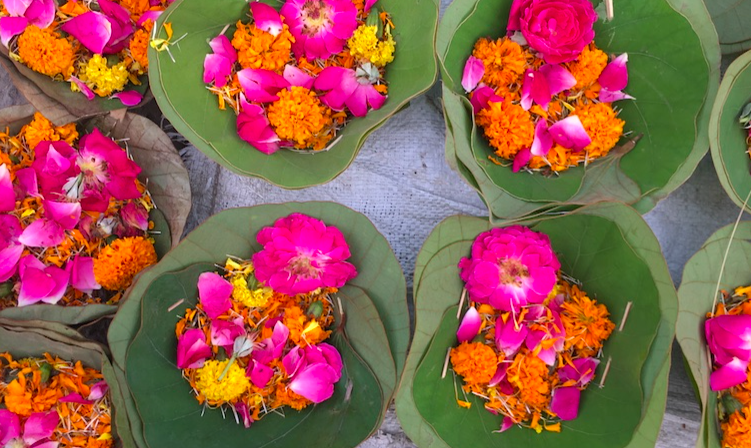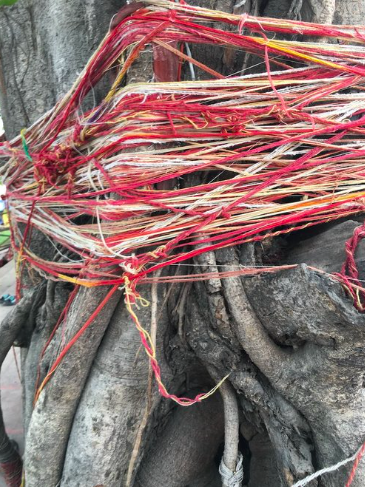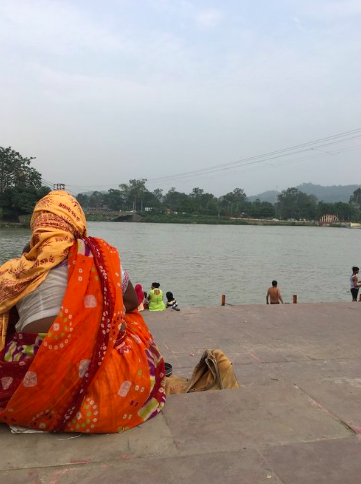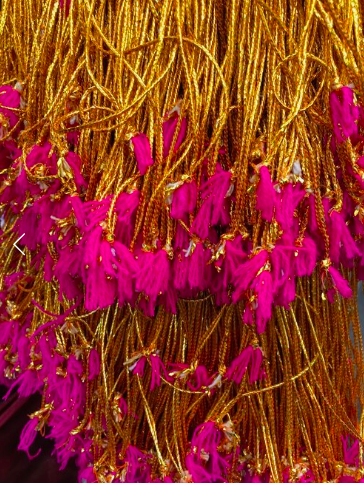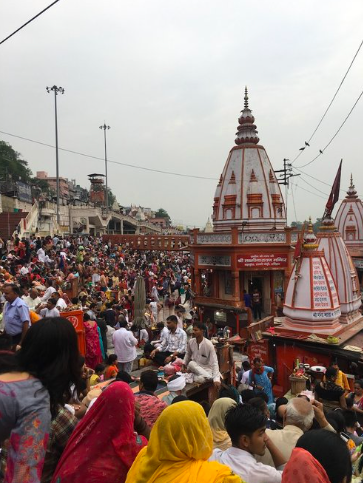Saffron Pilgrimage
JAMMU
Following a flight, a car ride, a walk and then a chopper, we reached our destination. Jammu, a city mostly visited by spiritual travelers, is located in the western part of the northern most state of India, Jammu and Kashmir .A coolie whispers ‘ghode loge?’( “would you like a horse?”) in my ears and a most overpowering smell of horse poop fills my nose and then my face. I see sharp-jawed Himalayan men carrying people’s bags, taming horses and even lifting older men and women. There are many shops on both the sides of the road, all selling red netted fabric to offer to the goddess in a cave on top of the hill with coconuts and sweets in a jute bag.
Most service providers, local shops and businesses are run for spiritual visitors. So could we safely say, that religion is a strong base for the local economy to run? Does the Hindu belief of ‘Teerth Yatra’ help the local vendors earn their bread and butter? According to mythologist Devdutt Pattanaik, Teerth Yatra was a way for people to travel in the days when there were no automobiles. The idea then was to explore the world outside, just as it remains today. Due to years of belief, Indians have taken journeys across to country to be closer to god. Ironically, a wave of modern-day spiritually can be felt in this generation with an alternate belief system burgeoning every year. Many choose to take inner spiritual journeys through these alternate methods. However, the increase of journeys taken to spiritual destinations like Jammu, Haridwar, Varanasi and many in the south of the country has given birth to a flourishing industry. From the fruit and flower vendors to other merchandise sellers that include Vermillion, plastic stickers, threads and idols of gods serve these seasonal customers. Motels, dhaba shops and local taxis have increased tremendously in the past couple of years. Jammu is also known for its authentic nut shops for walnuts and almonds from Kashmir. I see families shopping in kilograms and the supply has increased with the demand. I wondered about the ideas of sustainability that have been floating in the contemporary travel industry. Most of these visitors seemed unaware. Another conversationalist could raise the topic of animal rights, with horses used to take unfit travelers to the temple on top of the hill. In the temple, the connection with god remains largely ritualistic that involves paying the priest and a security guard to get ahead in the cue. It was apparent that these travellers who are motivated by a belief, had given rise to many jobs and opportunities for the locals. But we are a country that is overpopulated and needed these opportunities. So is this a vicious cycle? I see families coming together in the name of this spiritual journey. With them exchanging snacks through journeys, singing religious songs, buying souvenirs, it could be a little bit of an ideal family getaway. They hope that God will now be now pleased with them. Sometimes ‘Ignorance is bliss’, I told myself, and the question of whether spiritual travel is a good or a bad thing, is, as always,subject to discussions over time .
HARIDWAR
Saffron, or ‘ Kesariya’ in Hindi, the golden orange colour holds a special place in Hinduism and can be seen everywhere in Haridwar. Like an undecided code for an overcrowded gathering, I see saris, dhotis, threads, vermilion, painted temple tops, flowers and diyas (mud lamps) Jalebis and ladoos ( Indian sweets), the sky and sun, all belonging to a shade card of orange. Hindu saints have always been inspired by nature, and experimenting with nature has formed components of the Vedas. One can see that a lot of importance has been given to the time of sunset and sunrise in our rituals and fire is cleansing during these rituals. I wondered, maybe the colour saffron is symbolic of these important elements of Hinduism. It may be symbolic to the purity and divine strength, light, and salvation, hence maybe all the sadhus adorn it. Maybe in the path of seeking the ultimate truth, the colour holds some importance.
Further walking through the streets there is a whiff of burning oil mixed with cardamom and ginger from chai being made. This place is anything but quiet. As I walk along the Ganges, I see a lot of wet, naked people ( not something I would see a lot outside of here). All are here to wash off their sins. Some of them are seekers. Some are like me, just wandering.


